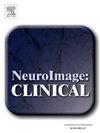特发性震颤深部脑刺激靶区运动核和感觉核的丘脑图谱和分割技术比较。
IF 3.6
2区 医学
Q2 NEUROIMAGING
引用次数: 0
摘要
许多丘脑地图集可用于深部脑刺激(DBS)应用,但它们的使用和临床验证各不相同。本研究通过结构差异、两种丘脑分割方法的影响以及个体化组织激活模型与临床结果的对应关系,探讨了六种图谱在DBS靶向特发性震颤(ET)中的有效性。方法:对22例ET合并单侧VIM DBS患者进行回顾性分析。组织激活体积(VTA)模型与震颤减少(n = 22)和持续感觉异常(n = 32)有关。共登记6个地图集进行两两比较。采用基于图谱的分割(ABS)和基于弥散张量成像的分割(DTIBS)对患者丘脑进行分割。几何特性和VTA与运动和感觉区域的重叠进行统计评估。结果:图谱的比较显示运动和感觉亚核的描绘存在显著差异(p)结论:图谱的选择和分割方法可能影响DBS的靶向准确性。在一个图谱上表现良好的分割方法可能不能推广到其他图谱,强调需要临床验证来评估手术计划的适用性。DTIBS可以实现更个性化的目标,但需要进一步改进才能始终优于传统方法。本文章由计算机程序翻译,如有差异,请以英文原文为准。
Comparison of thalamic atlases and segmentation techniques in defining motor and sensory nuclei for deep brain stimulation targeting in essential tremor
Introduction
Many thalamic atlases are available for deep brain stimulation (DBS) applications, but their usage and clinical validation vary. This study investigated the effectiveness of six atlases in DBS targeting for essential tremor (ET) through structural differences, impact of two thalamic segmentation methods, and correspondence with clinical outcomes via individualized tissue activation modeling.
Methods
22 ET patients with unilateral VIM DBS were retrospectively analyzed. Volume of tissue activation (VTA) models were linked to tremor reduction (n = 22) and sustained paresthesia (n = 32). Six atlases were co-registered for pairwise comparison. Patient thalami were segmented using atlas-based segmentation (ABS) and diffusion tensor imaging-based segmentation (DTIBS). Geometric properties and VTA overlap with motor and sensory regions were statistically assessed.
Results
Atlas comparisons revealed significant differences in motor and sensory subnuclei delineation (p < 0.001). ABS generally produced larger motor and smaller sensory volumes than DTIBS, with both showing significant geometric variability. For therapeutic VTAs, ABS consistently showed greater motor activation across all atlases, while DTIBS demonstrated this in only half. Sensory activation was more often greater for paresthesia than therapeutic VTAs using ABS. The Jakab atlas showed the strongest correspondence with clinical outcomes using both segmentation methods.
Conclusion
Atlas choice and segmentation method can potentially influence DBS targeting accuracy. A segmentation approach that performs well with one atlas may not generalize to others, underscoring the need for clinical validation to evaluate applicability in surgical planning. DTIBS may enable more individualized targeting, but requires further refinement to consistently outperform traditional methods.
求助全文
通过发布文献求助,成功后即可免费获取论文全文。
去求助
来源期刊

Neuroimage-Clinical
NEUROIMAGING-
CiteScore
7.50
自引率
4.80%
发文量
368
审稿时长
52 days
期刊介绍:
NeuroImage: Clinical, a journal of diseases, disorders and syndromes involving the Nervous System, provides a vehicle for communicating important advances in the study of abnormal structure-function relationships of the human nervous system based on imaging.
The focus of NeuroImage: Clinical is on defining changes to the brain associated with primary neurologic and psychiatric diseases and disorders of the nervous system as well as behavioral syndromes and developmental conditions. The main criterion for judging papers is the extent of scientific advancement in the understanding of the pathophysiologic mechanisms of diseases and disorders, in identification of functional models that link clinical signs and symptoms with brain function and in the creation of image based tools applicable to a broad range of clinical needs including diagnosis, monitoring and tracking of illness, predicting therapeutic response and development of new treatments. Papers dealing with structure and function in animal models will also be considered if they reveal mechanisms that can be readily translated to human conditions.
 求助内容:
求助内容: 应助结果提醒方式:
应助结果提醒方式:


